#Peter J. McGuire
Explore tagged Tumblr posts
Text
Labor in Western, Illinois
Labor Day is upon us. While many states had celebrated Labor Day before it became a federal holiday, in June of 1894, Congress passed an Act making it a legal holiday. Peter J. McGuire, general secretary of the Brotherhood of Carpenters and Joiners is credited with the idea of Labor Day. I love to see both current and historic opportunities to remember workers and their historic acts of…
#antique tractor show#Arenzville Illinois#Argyle Lake State Park#Arlo Shaw#Avery#Brotherhood of Carpenters and Joiners#Burrus Seeds#Cahd Shaw#collectibles#Dutch style windmill#farm labor#farm seed#fixers#Greater Peoria Farm Show#harvest#Industry Illinois#inventions#labor#Labor Day#Labor Day picnic#Landlord Game#Lizzie Magie#Macomb Illinois#Macomb Square#Macombopoly#McDonough County#minature Avery#Monopoly#Peter J. McGuire#Ralph Swearingen&039;s Old Mill touirst Camp
0 notes
Text
Let’s talk about this scene for a second in the 2002 Spider-Man.


J. Jonah Jameson was quick to deny that he knew how he got the photos of Spider-Man. Like immediately said “i don’t know, this stuff comes in the mail.” He immediately refused to reveal his sources.
Someone said it was because he’s such a shitty boss that he doesn’t remember Peter Parker’s name. But that’s not true since he’s constantly yelling it.
A google search will show there are more moments in the comics where he helps Peter/Spider-Man. Like below where he warns him of a bank robbery in progress. Now, I’m unsure about the context of the below instance, since idk if he knew Parker was Spider-Man here.

But it doesn’t stop with Peter Parker. He also refuses to publish that Miles Morales is Spider-Man.
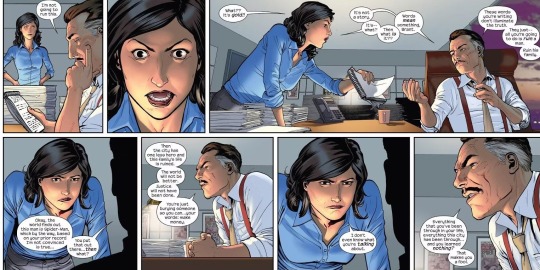
I don’t think he gets enough credit beyond being the owner of the Daily Bugle and Peter Parker’s Spider-Man obsessed boss.
Now don’t get me wrong, I do think he is a dick to Peter on numerous occasions. However, in some of the comics he does end up taking back his thoughts on Spider-Man being a villain, helping to design a new suit for him, as well as encouraging police to back him. He even goes as far to admit that the things he published about him being a menace aren’t true.
#spiderman#spider-man#tobey mcguire#2002 spider-man#peter parker#j jonah jameson#the daily bugle#Spider-Man comics#marvel#marvel comics#miles morales
80 notes
·
View notes
Text

HAPPY BIRTHDAY TO PETER NOONE, the great singer/actor/musician and front man for the uber-successful British Invasion pop band, Herman’s Hermits. Their run included 3 feature films, countless TV appearances, tours with The Beatles and The Who, and 60 million records sold, with songs written by Sam Cooke, Ray Davies, Goffin-King, and Graham Gouldman. Originally from Manchester, Peter was 12 years old when he entered showbiz. Davy Jones (also from Manchester) told me that when Peter was a “teen idol” on magazines he still had to take the trash out as he was still living at home with his folks. Beyond the 60s, Peter kept on making records, intersecting with Bruce Johnston (Beach Boys), Tom Petty, Phil Seymour, and David Bowie—who produced and played on Peter’s cover of “Oh You Pretty Things.” I also recommend The Tremblers, Peter’s New Wave rock band from 1979. Meanwhile, Peter is still on the trail with the current Hermits line-up, crooning “Mrs. Brown,” “There’s a Kind of Hush” and his other hits. I crossed paths with Peter on the road many times, and I admire the way he avails himself to his fans. Meanwhile, here’s “Today’s the Day,” a Peter Noone/DavyJones collaboration from 1998. HB PN and thank you for the years of musical joy you’ve given to us.
youtube
#peternoone #hermanshermits #thetremblers #raydavies #grahamgouldman #manchester #davyjones #monkees #brucejohnston #beachboys #tompetty #philseymour #davidbowie #prettythings #seanmcguire #phillipthornalley
#johnny j blair#music#pop rock#davy jones#monkees#Peter Noone#Herman's Hermits#Tremblers#Ray Davies#Graham Gouldman#Manchester#Bruce Johnston#Beach Boys#Tom Petter#David Bowie#Sean McGuire#Youtube
8 notes
·
View notes
Text
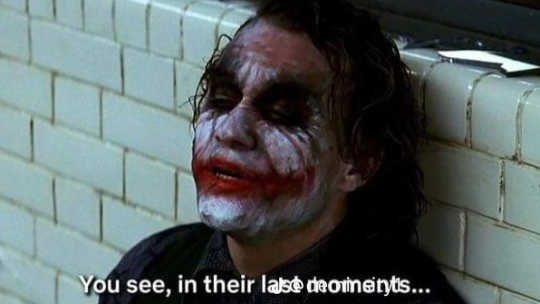


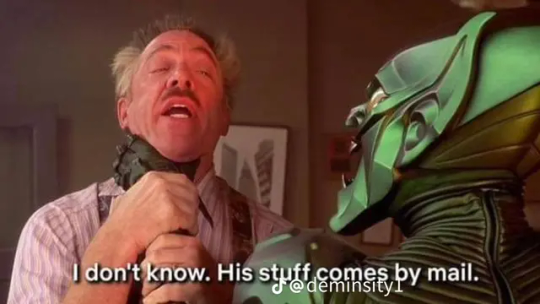
I know it says under the photos in the newspaper, ”photographer: Peter Parker”.
But J Jonah Jameson was a real one.
#mcu universe#mcu fandom#mcuedit#mcu icons#spider man edit#spider man#peter parker#green goblin#daily bugle#j jonah jameson#toby mcguire
11 notes
·
View notes
Text
So I found out there were 164 songs that were banned the day after 9/11 so i got curious. Here are all the ones that were banned.
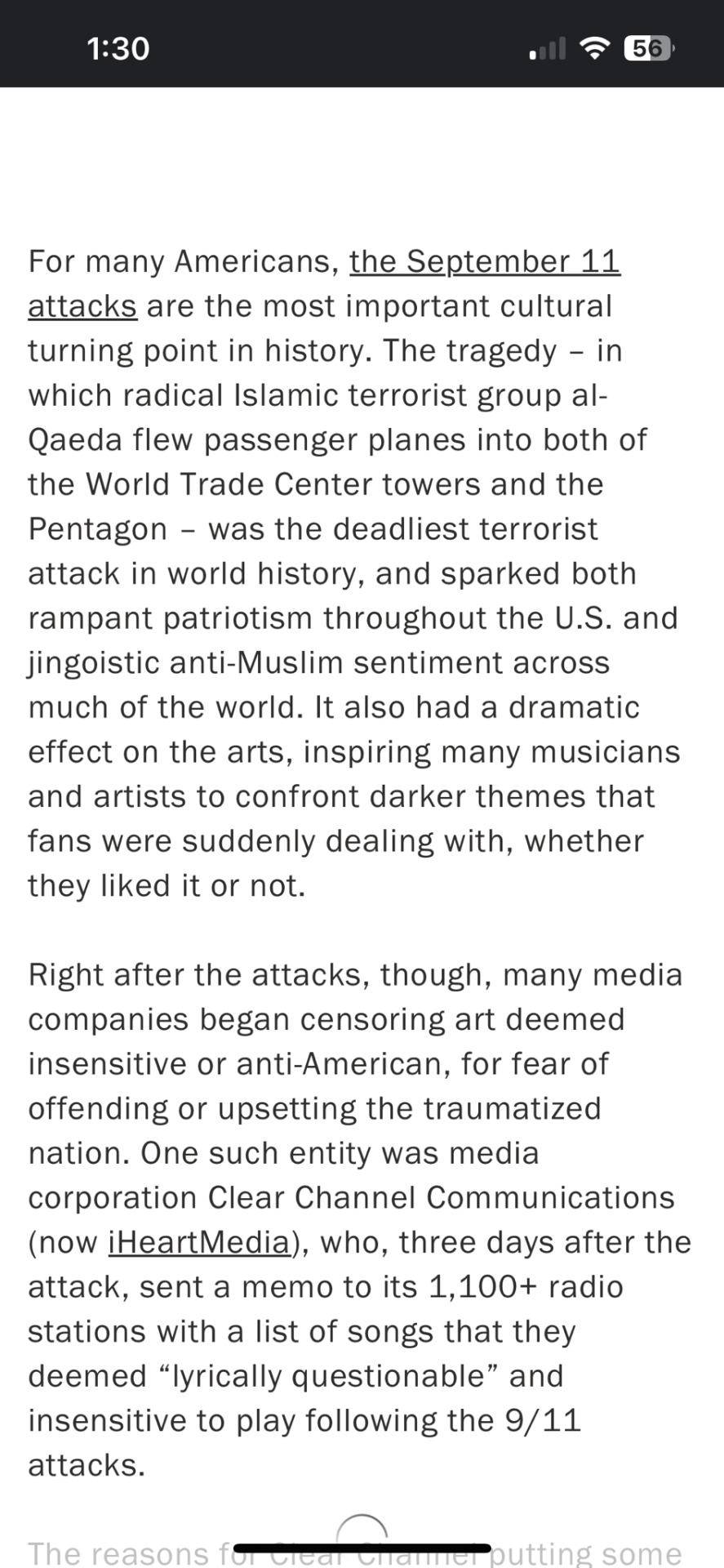
3 Doors Down – Duck and Run
311 – Down
AC/DC – Shot Down in Flames
AC/DC – Shoot to Thrill
AC/DC – Dirty Deeds
AC/DC – Highway to Hell
AC/DC – Safe in New York City
AC/DC – TNT
AC/DC – Hell’s Bells
Ad Libs – The Boy from New York City
Alanis Morissette – Ironic
Alice in Chains – Rooster
Alice in Chains – Sea of Sorrow
Alice in Chains – Down in a Hole
Alice in Chains – Them Bones
Alien Ant Farm – Smooth Criminal
Animals – We Gotta Get Out of This Place
Arthur Brown – Fire
Bangles – Walk Like an Egyptian
Barenaked Ladies – Falling for the First Time
Barry McGuire – Eve of Destruction
Beastie Boys – Sure Shot
Beastie Boys – Sabotage
The Beatles – A Day in the Life
The Beatles – Lucy in the Sky with Diamonds
The Beatles – Ticket To Ride
The Beatles – Obla Di, Obla Da
Billy Joel – Only the Good Die Young
Black Sabbath – War Pigs
Black Sabbath – Sabbath Bloody Sabbath
Blood Sweat and Tears – And When I Die
Blue Oyster Cult – Burnin’ For You
Bob Dylan / Guns N’ Roses – Knockin’ on Heaven’s Door
Bobby Darin – Mack the Knife
Boston – Smokin’
Brooklyn Bridge – Worst That Could Happen
Bruce Springsteen – I’m On Fire
Bruce Springsteen – Goin’ Down
Bruce Springstein – War
Buddy Holly and the Crickets – That’ll Be the Day
Bush – Speed Kills
Carole King – I Feel the Earth Move
Cat Stevens – Peace Train
Cat Stevens – Morning Has Broken
Chi-Lites – Have You Seen Her
The Clash – Rock the Casbah
Creedence Clearwater Revival – Travelin’ Band
The Cult ��� Fire Woman
Dave Clark Five – Bits and Pieces
Dave Matthews Band – Crash Into Me
Dio – Holy Diver
Don McLean – American Pie
The Doors – The End
Drifters – On Broadway
Drowning Pool – Bodies
Edwin Starr – War
Elton John – Benny & The Jets
Elton John – Daniel
Elton John – Rocket Man
Elvis – (You’re the) Devil in Disguise
Everclear – Santa Monica
Filter – Hey Man, Nice Shot
Fontella Bass – Rescue Me
Foo Fighters – Learn to Fly
Jimi Hendrix – Hey Joe
Frank Sinatra – New York, New York
Fuel – Bad Day
The Gap Band – You Dropped a Bomb On Me
Godsmack – Bad Religion
Green Day – Brain Stew
Happenings – See You in September
Herman’s Hermits – Wonderful World
Hollies – He Ain’t Heavy, He’s My Brother
J. Frank Wilson – Last Kiss
Jackson Brown – Doctor My Eyes
James Taylor – Fire and Rain
Jan and Dean – Dead Man’s Curve
Jerry Lee Lewis – Great Balls of Fire
Jimi Hendrix – Hey Joe
John Lennon – Imagine
John Mellencamp – Crumbling Down
John Mellencamp – I’m On Fire
John Parr – St. Elmo’s Fire
Judas Priest – Some Heads Are Gonna Roll
Kansas – Dust in the Wind
Korn – Falling Away From Me
Led Zeppelin – Stairway to Heaven
Lenny Kravitz – Fly Away
Limp Bizkit – Break Stuff
Local H – Bound for the Floor
Los Bravos – Black is Black
Louis Armstrong – What A Wonderful World
Lynyrd Skynyrd – Tuesday’s Gone
Martha & the Vandellas – Nowhere to Run
Martha & the Vandellas – Dancing in the Streets
Megadeth – Dread and the Fugitive
Megadeth – Sweating Bullets
Metallica – Seek and Destroy
Metallica – Harvester or Sorrow
Metallica – Enter Sandman
Metallica – Fade to Black
Mitch Ryder and the Detroit Wheels – Devil with the Blue Dress
Mudvayne – Death Blooms
Neil Diamond – America
Nina – 99 Luft Balloons/99 Red Balloons
Nine Inch Nails – Head Like a Hole
Norman Greenbaum – Spirit in the Sky
Oingo Boingo – Dead Man’s Party
Ozzy Osbourne – Suicide Solution
Paper Lace – The Night Chicago Died
Pat Benatar – Hit Me with Your Best Shot
Pat Benatar – Love is a Battlefield
Paul McCartney and Wings – Live and Let Die
Peter Gabriel – When You’re Falling
Peter and Gordon – I Go To Pieces
Peter and Gordon – A World Without Love
Peter Paul and Mary – Blowin’ in the Wind
Peter Paul and Mary – Leavin’ on a Jet Plane
Petula Clark – A Sign of the Times
Phil Collins – In the Air Tonight
Pink Floyd – Run Like Hell
Pink Floyd – Mother
P.O.D. – Boom
Pretenders – My City Was Gone
Queen – Another One Bites the Dust
Queen – Killer Queen
All Rage Against The Machine songs
Red Hot Chili Peppers – Aeroplane
Red Hot Chili Peppers – Under the Bridge
R.E.M. – It’s the End of the World as We Know It
Rickey Nelson – Travelin’ Man
Rolling Stones – Ruby Tuesday
Saliva – Click Click Boom
Sam Cooke – Wonderful World
Santana – Evil Ways
Savage Garden – Crash and Burn
Shelly Fabares – Johnny Angel
Simon And Garfunkel – Bridge Over Troubled Water
Skeeter Davis – End of the World
Slipknot – Left Behind
Slipknot – Wait and Bleed
Smashing Pumpkins – Bullet With Butterfly Wings
Soundgarden – Blow Up the Outside World
Soundgarden – Fell on Black Days
Soundgarden – Black Hole Sun
Steam – Na Na Na Na Hey Hey
Steve Miller – Jet Airliner
Stone Temple Pilots – Big Bang Baby
Stone Temple Pilots – Dead and Bloated
Sugar Ray – Fly
Surfaris – Wipeou
System Of A Down – Chop Suey!
Talking Heads – Burning Down the House
Temple of the Dog – Say Hello to Heaven
Third Eye Blind – Jumper
Three Degrees – When Will I See You Again
Tom Petty – Free Fallin’
Tool – Intolerance
Tramps – Disco Inferno
U2 – Sunday Bloody Sunday
Van Halen – Dancing In The Street
Van Halen – Jump
Yager and Evans – In the Year 2525
Youngbloods – Get Together
Zombies – She’s Not There
10 notes
·
View notes
Note
Do you guys have any more intersex rep books? There's only like 5 on here and it's hard to find anything ;w;
Main Characters:
Pantomime by L. R. Lam - bisexual intersex genderfluid MC
That Inevitable Victorian Thing by E. K. Johnston - poc queer female x bisexual intersex female x male
None of the Above by I. W. Gregorio - intersex female
Golden Boy by Abigail Tartellin - intersex male
Annabel by Kathleen Winter - trans-femme intersex male
Middlesex by Jeffery Eugenides - Greek-American intersex transgender male
Cattywampus by Ash Van Otterloo - intersex female
Double Exposure by Bridget Birdsail - intersex female
Across the Green Grass Fields by Seanan McGuire - intersex female
Miss Jane by Brad Watson - intersex female MC born with vaginal agenesis that causes incontinence and prevents penetrative sex
An Ordinary Wonder by Buki Papillon - Nigerian intersex female MC forced to live as a boy
Sorrowland by Rivers Solomon - black albino bisexual intersex MC who is partially blind and has chronic pain
The Desert Prince by Peter V. Brett - intersex female questioning her gender identity
Lord of the Last Heartbeat by Mary Peterson - non-binary intersex MC (he/him)
Real Easy by Marie Rutkoski - intersex female
Just Ash by Sol Santana - intersex male
Trans Liberty Riot Brigade by L. M. Pierce - queer intersex female with a fantasy-drug addiction
Side Characters / World Building:
Temper by Nicky Drayden - intersex SCs in a world where everyone is born with a twin, and sometimes the genitalia gets "mixed" between them
2313 by Kim Stanley Robinson - intersex female MC due to future scientific advancements in a society without gender norms, where intersex / nonbinary seems to be the default
The Pursued and the Pursuing by A. J. Odasso - intersex female prominent SC (adopted daughter of main mlm couple)
Manywhere: Stories by Morgan Thomas - intersex prominent SC, but gender identity unknown
full notes on representation and publishing info at qbdatabase.com
126 notes
·
View notes
Text

Finished ten books total this month, which I'm pretty sure is more than I finished in the first six months of 2024. Also split nearly evenly between comics and everything else, which was cool! In reading order (vs. stackability):
A Grief Observed - C.S. Lewis
The Trip to Echo Spring: On Writers and Drinking - Olivia Laing
A Heart That Works - Rob Delaney
Batman: Wayne Family Adventures, Vol. 1 - CRC Payne and Starbite
Slow Horses - Mick Herron (reread)
Batman and Robin: Book One - Peter J. Tomasi and Patrick Gleason
Batman & Robin: Batman Reborn - Grant Morrison, Frank Quitely, and Philip Tan
The North Water - Ian McGuire
Batman & Robin: Batman vs. Robin - Grant Morrison, Cameron Stewart, and Andy Clarke
The Emperor's Winding Sheet - Jill Paton Walsh
3 notes
·
View notes
Text
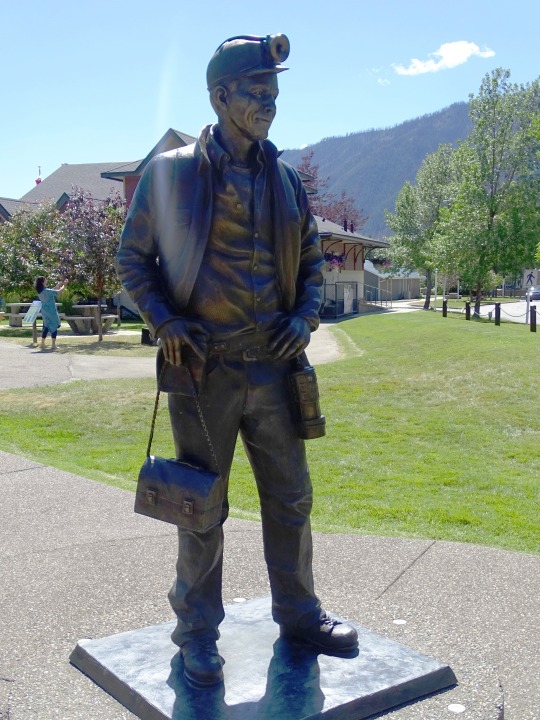















Labor Day
Summer’s final fling has arrived in the form of Labor Day. Yes, most of us get the day off, but this holiday triggers mixed emotions. While summer still has 21 calendar days left, it’s time to get serious. School’s starting and there’s a sense that summer vacation is over. So what’s behind Labor Day — and how did it earn a place as a federal holiday?
Let’s take a look.
When is Labor Day 2024?
Labor Day always falls on the first Monday in September, which means anywhere from September 1 through September 7. This year it's September 2 in the U.S. and Canada. However, this is not the case for most countries �� the majority of which celebrate on May 1.
History of Labor Day
Do you get weekends off work? Lunch breaks? Paid vacation? An eight-hour workday? Social security? If you said “yes” to any of these questions, you can thank labor unions and the U.S. labor movement for it. Years of hard-fought battles (and the ensuing legislation they inspired) resulted in many of the most basic benefits we enjoy at our jobs today. On the first Monday in September, we take the day off to celebrate Labor Day and reflect on the American worker’s contributions to our country.
Labor Day History
There’s disagreement over how the holiday began. One version is set in September 1882 with the Knights of Labor, the largest and one of the most important American labor organizations at the time. The Knights in New York City held a public parade featuring various labor organizations on September 5 — with the aid of the fledgling Central Labor Union (CLU) of New York. Subsequently, CLU Secretary Matthew Maguire proposed that a national Labor Day holiday be held on the first Monday of each September to mark this successful public demonstration.
In another version, Labor Day in September was proposed by Peter J. McGuire, a vice president of the American Federation of Labor. In spring 1882, McGuire reportedly proposed a “general holiday for the laboring classes” to the CLU, which would begin with a street parade of organized labor solidarity and end with a picnic fundraiser for local unions. McGuire suggested the first Monday in September as an ideal date for Labor Day because the weather is great at that time of year, and it falls between July 4th and Thanksgiving. Oregon became the first U.S. state to make it an official public holiday. 29 other states had joined by the time the federal government declared it a federal holiday in 1894.
Maguire or McGuire? Read more on this unusual coincidence in our FAQs below.
What is the Haymarket affair?
On May 4, 1886 — at a time when most American laborers worked 18 or even 20 hours a day — tens of thousands of workers protested in cities all across the U.S. to demand an eight-hour workday. Police in Chicago attacked both those peaceful protests and a workers planning meeting two days later, randomly beating and shooting at the planning group and killing six. When outraged Chicagoans attended an initially peaceful protest the next evening in Haymarket Square, police advanced on the crowd again. Someone who was never identified detonated a bomb that killed a police officer, leading cops to open fire on protesters and provoke violence that led to the deaths of about a dozen workers and police.
The Pullman strike
Ironically, Chicago was also the setting for the bloody Pullman strike of 1894, which catalyzed the establishment of an official Labor Day holiday in the U.S. on the first Monday of September.
The strike happened in May in the company town of Pullman, Chicago, a factory location established by luxury railroad car manufacturer the Pullman Company. The inequality of the town was more than apparent. Company owner George Pullman lived in a mansion while most laborers stayed in barracks-style dormitories. When a nationwide depression struck in 1893, Pullman decided to cut costs the way a lot of executives at the time did — by lowering wages by almost 30% while he kept the rent on the dormitories he leased to his workers at pre-depression levels.
Railroad boycott
These conditions ultimately led workers to strike on May 11, 1894. The walkout gained the support of the nationwide American Railroad Union (ARU), which declared that ARU members would no longer work on trains that included Pullman cars. That national boycott would end up bringing the railroads west of Chicago to a standstill and led to 125,000 workers across 29 railroad companies quitting their jobs rather than breaking the boycott.
When the Chicago railroad companies hired strikebreakers as replacements, strikers also took various actions to stop the trains. The General Managers Association, which represented local railroad companies, countered by inducing U.S. Attorney General Richard Olney, a former railroad attorney, to intervene. Indianapolis federal courts granted Olney an injunction against the strike, a move that allowed President Grover Cleveland to send in federal troops to break it up.
A few days later, Cleveland realized that he had to act quickly to appease the country’s increasingly agitated labor movement. But he didn’t want to commemorate the Haymarket incident with a May holiday that would invoke radical worker sentiment. So Cleveland harkened back to the first established September 1882 holiday and signed into law that Labor Day in the U.S. would be celebrated on the first Monday in September.
Labor Day vs. May Day
Communist and socialist factions worldwide eventually chose May 1 as the date to mark the Haymarket affair. A 1904 conference issued a plea that trade unions stage rallies on the first day of May — demanding to make the eight-hour workday standard. They organized the action in the name of “universal peace.” The 1st of May is a national, public holiday in many countries across the world, generally known as “Labour Day,” “International Workers’ Day,” or a similar name – although some countries celebrate a Labor Day on other dates significant to them, such as Canada, which celebrates Labor Day, like the U.S., on the first Monday of September.
Here’s the U.S. Department of Labor’s official tribute to U.S. workers on Labor Day:
“The vital force of labor added materially to the highest standard of living and the greatest production the world has ever known, and has brought us closer to the realization of our traditional ideals of economic and political democracy. It is appropriate, therefore, that the nation pays tribute on Labor Day to the creator of so much of the nation’s strength, freedom, and leadership — the American worker.”
Related Labor Day Content
1) Top Labor Day quotes for your social feeds
Can you guess which president said, “My father taught me to work; he did not teach me to love it”? How about the famous American who uttered “All labor that uplifts humanity has dignity”? We have a list of Labor Day quotes to not only learn about the holiday but to also impress your friends at the barbecue.
2) Fire yourself from your own job
That’s correct. The makers of STōK cold-brew coffees have designed a contest — running through Labor Day — which will give three people $30,000 each in order to take a four-week “STōKbbattical” (from their dreary day jobs) and “make their dreams happen.” It can be anything from rock climbing in Patagonia to setting records for the number of tapas eaten in Spain. No matter what, STōK will help fund it. Unless of course, you’d prefer to spend the next four weeks filling out TPS reports.
3) 8 Labor Day Activities To Enjoy
Whether in the form of a leisurely barbeque, a relaxing swim in the pool, watching a film at a drive-in cinema, or even just relaxing at home with family, there are so many different ways to mark the occasion. We list some activities to try on Labor Day.
Labor Day timeline
1882 It’s Unofficial
10,000 labor workers march through Union Square in New York to protest poor working conditions and low wages.
1884 A Date is Set
The first Monday of September officially becomes Labor Day, with the Central Labor Union pushing other organizations to follow suit and celebrate.
1894 Congress Approves
Labor Day is approved as a national holiday by Congress, and President Grover Cleveland signs it into law.
2009 Let’s Not Forget Women in Labor
President Obama restores the rights of women to sue over pay discrimination with the Lilly Ledbetter Fair Pay Act.
Labor Day Traditions
Much like Memorial Day, which marks the traditional beginning of summer, Labor Day generally signifies that the season has ended — even though the calendar says otherwise. Holiday sales, barbecues, and travel tend to rule the day, while children finally adjust to the harsh reality of the “back-to-school” season. As far as U.S. sports are concerned, Labor Day weekend signals that baseball’s pennant races have entered their final stretch, and tennis fans get an extra day to watch the season’s last Grand Slam event — the U.S. Open in New York City. NFL regular-season games typically begin following Labor Day.
Labor Day by the numbers
162 million – the number of Americans (over 16) in the labor force.
40% – the percentage of U.S. workers who belonged to labor unions in the 1950s (that dropped to 11% by 2018).
1894 – the year Congress officially made Labor Day a federal holiday.
86% – the percentage of Americans planning Labor Day weekend travel who will do so by car.
41% – the percentage of Americans who plan to barbecue over Labor Day Weekend.
818 – the number of U.S. hot dogs eaten every second from Memorial Day to Labor Day.
$685 – the average kid’s back-to-school expenses.
$55,000 – the median U.S. household income.
705 million – the total number of U.S. unused vacation days (2017).
80% – the percentage of Americans who would take time off if their boss were more supportive.
— courtesy WalletHub ©2018
Labor Day FAQs
What does Labor Day really mean?
Americans, as well as workers around the world, celebrate Labor Day by reflecting on all the contributions everyday workers have made to society. Not all countries observe Labor Day on the same date though.
When is Labor Day 2020?
The U.S. observed Labor Day 2020 on Monday, September 2. It’s a federal holiday. Financial markets are closed. There is no mail delivery. Post offices and libraries are closed. Most retail businesses will remain open.
Who invented Labor Day?
It’s more confusing than you might think. The Labor Department explains it this way:
While most sources, including the U.S. Department of Labor, credit Peter McGuire with the origination of Labor Day, recent evidence suggests that the true father of Labor Day may, in fact, be another famous union leader of the 19th century, Matthew Maguire.
Maguire held some political beliefs that were considered fairly radical for the day and also for Samuel Gompers and his American Federation of Labor. Allegedly, Gompers, who co-founded the AFL along with his friend McGuire, did not want Labor Day to become associated with the sort of “radical” politics of Matthew Maguire. So in an 1897 interview, Gompers’ close friend Peter J. McGuire was assigned the credit for the origination of Labor Day.
What's the difference between Labor Day and May Day (May 1)
May 1 (or May Day) is a more radicalized version of Labor Day in many countries. The date recalls Chicago’s Haymarket affair in 1886. American workers, tired of 18-hour days, staged a protest. Police eventually fired on the workers — killing eight. The following night, May 4, another rally turned violent when someone threw a bomb at police officers. An estimated 11 people died and scores more were injured. Communist and socialist political parties eventually chose May 1 as the date to honor the dead and injured workers.
Labor Day Activities
Read up on the history of Labor Day
Buy an American-made product
Watch a movie about labor unions
Labor Day has a rich history that directly impacts the working conditions we experience today. So in between rounds of BBQ at your Labor Day celebration, take the time to discuss the U.S. labor movement and its contribution to our country's current work culture.
When you're doing your Labor Day shopping, take the time to read the labels. Consider buying products that say "Made in the USA" to show your support for American workers.
Many of us get Labor Day off. What better way to relax than to stretch out on the couch and watch a movie about the American labor movement? There are tons of union-themed movies to choose from. "Norma Rae" ring a bell? Side note: Unions play a major role in the entertainment industry.
5 Labor Day Facts Everyone Should Know!
It’s on May 1 in other countries
Stores remain open
Third most popular holiday for outdoor cookouts
Labor Day marks the unofficial NFL kickoff
Union members today
Most countries around the world celebrate Labor Day on May 1, and it is called International Workers’ Day.
While most schools and offices are closed on Labor Day, retail workers and shopkeepers don’t get the same break, as the holiday is huge for sales and shopping.
Labor Day is right behind the Fourth of July and Memorial Day in being the most popular holiday for barbecues and cookouts.
99.4% of the time, the NFL’s first official game of the season is on the Thursday following Labor Day.
In 2017, there were 14.8 million union members, according to the Bureau of Labor Statistics, while in 1983, there were 17.7 million.
Why We Love Labor Day
We're hard workers — we deserve the day off
It's one last chance to grill
It's the reason we can say TGIF
Statistics show that Americans work longer hours than citizens of most other countries — 137 more hours per year than Japan, 260 more per year than the U.K., and 499 more than France. And our productivity is high — 400% higher than it was in 1950, to be exact. So we totally deserve that day off.
Labor Day is widely considered to be the unofficial last day of summer. Before the air turns cold and the leaves start to fall, it's our last chance to grill some steaks and wear shorts.
Labor Day is a time to celebrate the benefits we enjoy at our jobs — including weekends off. The concept of American workers taking days off dates back to 1791, when a group of carpenters in Philadelphia went on strike to demand a shorter workweek (10-hour days, to be exact). It wasn't until 1836 that workers started demanding eight-hour workdays. So nine to five doesn't sound so bad after all.
Source
#Edmonton#Sparwood#Coal Miner#British Columbia#Terex 33-19 Titan#USA#Canada#Labor Day#First Monday in September#2 September 2024#LaborDay#Logger by Joerg Jung#Prospector and his dog by Chuck Buchanan#Stampeder Statue by Peter Lucchetti#Skagway Centennial Statue by Chuck Buchanan#Standing Together by John Greer#Anonymity of Prevention by Derek Lo and Lana Winkler#Whitehorse#travel#original photography#tourist attraction#landmark#vacation
3 notes
·
View notes
Photo









May Monthly Recap
I read so many books in May (27!!) - I guess that’s what happens when you get hooked on cozy mysteries and binge a bunch of them! My favorite, though, was Some Desperate Glory, which was excellent although you should absolutely look at the content warnings, as well as my reread of the first couple Lord Peter Wimsey books, which are better now than they were when I read them in high school.
Lost in the Moment and Found by Seanan McGuire: 4.75/5
The Mimicking of Known Successes by Malka Older: 4.5/5
How to Find a Princess by Alyssa Cole: 2/5, dnf
How to Keep House While Drowning by K. C. Davis: 5/5
Much Ado About Nauticaling by Gabby Allan: 2.75/5, dnf
Primary Inversion by Catherine Asaro: 3.75/5
Just One Damned Thing After Another by Jodi Taylor: 3/5
The Justice of Kings by Richard Swan: 4.5/5
Mimi Lee Gets a Clue by Jennifer J. Chow: 2/5, dnf
Farm to Trouble by Amanda Flower: 2.75/5
Fun Home by Alison Bechdel: 4/5
Whose Body? by Dorothy Sayers: 4.5/5, reread
White Sand, Vol. 1 by Brandon Sanderson: 3.5/5
Some Desperate Glory by Emily Tesh: 5/5
Dead Eye by Alyssa Day: 3.75/5
Private Eye by Alyssa Day: 3/5
Evil Eye by Alyssa Day: 3.75/5
Eye of Danger by Alyssa Day: 4/5
Eye of the Storm by Alyssa Day: 3.25/5
Apple of My Eye by Alyssa Day: 3.5/5
Witchful Thinking by Celestine Martin: 4.25/5
The Radiant Seas by Catherine Asaro: 2.75/5, dnf
Clouds of Witness by Dorothy Sayers: 5/5, re-read
Through a Glass, Deadly by Sarah Atwell: 4.5/5
Rafe by Rebekah Weatherspoon: 4.5/5
Pane of Death by Sarah Atwell: 4.25/5
Snake in the Glass by Sarah Atwell: 4.25/5
And my goal progress under the cut:
23 in 2023: 13 [+3]
Read 100 books: 90 [+27]
Translated works: 1 [+0]
Physical TBR: 10 [+2]
Top of TBR: 3 [+1]
Books in Spanish: 0
Read 40% AOC: 21.1% [-1.1%] (SIGH)
Discworld Books: 1 [+0]
Series: 15 started vs. 22 caught up/finished [+6/+6]
Storygraph recs: 1 | avg. 3/5 [+0]
Indigenous authors: 1 [+0]
13 notes
·
View notes
Text
books I read in 2023
I had a huge reading year this year because of my gruelingly long commute. The list below the cut is mostly for my own edification, but I’m a nosy person who supports other nosy people, so if you want to know what I’ve been up to, have at it. Almost everything I read this year was from the library.
1/12 A Charmed Life, Diana Wynne Jones
1/18 The Lesbiana’s Guide to Catholic School, Sonora Reyes
1/24 The Life-Changing Magic of
Tidying Up, Marie Kondo
1/25 Hotel Magnifique, Emily J. Taylor
1/30 Spark Joy, Marie Kondo
2/2 The House in the Cerulean Sea, TJ Klune
2/8 The Golden Enclaves, Naomi Novik
2/8 Delilah Green Doesn’t Care, Ashley Herring Blake
2/15 The Nile, Toby Wilkinson
2/23 The Painted Queen, Elizabeth Peters and Joan Hess
2/28 Ella Enchanted, Gail Carson Levine
3/5 Tipping the Velvet, Sarah Waters
3/12 Lord of the Silent, Elizabeth Peters
3/16 Marie Kondo’s Kurashi at Home, Marie Kondo
3/20 Shirley Jackson: A Rather Haunted Life, Ruth Franklin
3/20 The Art of Simple Living, Shunmyo Masuno
3/26 The Bird’s Nest, Shirley Jackson
4/11 Life Among the Savages, Shirley Jackson
4/12 A People’s History of the United States, Howard Zinn
4/18 The Yellow Wallpaper and Other Stories, Charlotte Perkins Gilman
4/21 Rest Is Resistance: A Manifesto, Tricia Hersey
5/1 Last Night at the Telegraph Club, Malinda Lo
5/3 Astrid Parker Doesn’t Fail, Ashley Herring Blake
5/10 Fight Like Hell: The Untold Story of American Labor, Kim Kelly
5/11 Conflict Resolution for Holy Beings, Joy Harjo
5/12 Why I’m No Longer Talking to White People About Race, Reni Eddo-Lodge
5/15 The Lottery and Other Stories, Shirley Jackson
5/18 The Lives of Christopher Chant, Diana Wynne Jones
5/29 A Little Devil in America, Hanif Abdurraqib
6/3 A Marvellous Light, Freya Marske
6/6 Ducks, Kate Beaton
6/8 Wild and Wicked Things, Francesca May (awful. Every character was an idiot. Why did I finish this)
6/10 Breathing Lessons: A Doctor’s Guide to Lung Health, Meilan K. Han, MD
6/19 The Three Body Problem, Cixin Liu
6/19 A Fortune for Your Disaster, Hanif Abdurraqib (I liked this even more than the last one I read. Maybe because it was an audiobook read by the author.)
6/22 Disjointed, Diana Jovin (ed) (skipped parts that were totally unrelated to me and some things that were also too technical)
6/22 The Lavender Scare, David K. Johnson
6/26 Enquête au collège, Jean-Phillipe Arrou-Vignod
6/28 The Thief, Megan Whalen Turner
7/3 Last Call, Elon Green
7/12 Cache Cache Petit Fantôme
7/13 Le Petit Prince, Antoine de Saint-
Exupéry
7/13 La fille qui navigua autour de féérie dans un bateau construit de ses propres mains, Catherynne M Valente
7/14 Lost in the Moment and Found, Seanan McGuire
7/14 Ich mag dich gesund sagte der Bär, Janosch
7/25 The Lies of Locke Lamora, Scott Lynch
7/31 The Adventures of Amina Al-Sirafi, Shannon Chakraborty
8/10 A Restless Truth, Freya Marske
8/16 Camp Damascus, Chuck Tingle
9/6 The Body in the Garden, Katherine Schellman
9/11 Silence in the Library, Katherine Schellman
9/13 When Things Get Dark, various
9/19 Death at the Manor, Katherine Schellman
9/25 Sorcery and Cecelia, Patricia C Wrede and Caroline Stevermer
10/3 The Grand Tour, Patricia C Wrede and Caroline Stevermer
10/6 Murder at Midnight, Katharine Schellman
10/12 The Mislaid Magician, Patricia C Wrede and Caroline Stevermer
10/18 Shakespeare Was a Woman and Other Heresies, Elizabeth Winkler
10/18 Harry Potter und der Stein der Weisen, JK Rowling
10/25 Poisoner in Chief: Sidney Gottlieb and the CIA search for Mind Control, Stephen Kinzer
11/1 Iris Kelly Doesn’t Date, Ashley Herring Blake
11/3 Nothing But Blackened Teeth, Cassandra Shaw
11/9 Unfuck Your Habitat, Rachel Hoffman
11/11 Safe and Sound, Mercury Stardust
11/12 Organizing Solutions for People with ADHD (revised and updated), Susan C. Pinskey
11/18 Red Seas under Red Skies, Scott Lynch
11/20 In With the Old: Classic Decor A to Z, Jennifer Boles
11/23 Habitat: The Field Guide to Decorating, Lauren Liess
11/24 Vermeer: The Complete Paintings, Norbert Schneider
11/29 The Conscious Closet, Elizabeth L. Cline
12/4 Leech, Hiron Ennes
12/6 The Star that Always Stays, Anna Rose Johnson
P12/14 The Republic of Thieves, Scott Lynch
12/15 An American Sunrise, Joy Harjo
12/20 The Wife Upstairs, Rachel Hawkins
12/22 How to Keep House While Drowning, KC Davis
12/30 The Gentle Art of Swedish Death Cleaning, Margareta Magnusson
Gave up on: The Woman Who Would Be King, Kara Cooney (too speculative/fictionalized)
A Scatter of Light, Malinda Lo (nothing really wrong, it just wasn’t holding my attention at all)
14 histoires pour avoir peur mais pas trop quand même (turned into full cast audio and the music between stories was really annoying)
Manhunt, Gretchen Felker-Martin (not in the right headspace maybe, maybe just not for me)
American Cozy, Stephanie Pedersen (got annoyed at how much of the information hinged on living in a huge suburban home with 18 closets and a husband and multiple children you can make do your chores for you)
The Curated Closet, Anuschka Rees (not bad just not what I was looking for)
2 notes
·
View notes
Text

Laboring at Big Bend Tunnel
New Jersey looms large in the history of Labor Day. Two labor organizers with roots in the state—Peter J. McGuire and Matthew Maguire—are often credited with being the first to propose the concept of a Labor Day holiday in the United States.
John Henry, legendary for his work on the railroads, was a nineteen-year-old who came from New Jersey as well, at least according to some historians. Many details of the folk hero’s life remain subject to historical dispute, but the ‘steel-driving’ freedman is widely lionized in ballads as a man who did battle with a steam-powered rock drill and won.
Steel drivers were laborers tasked with hammering dynamite holes into rock during the construction of railroad lines in the 1800s. As the legend goes, Henry—a freedman working on a tunnel on the Chesapeake and Ohio (C&O) Railway in West Virginia—was so strong and skilled that he set out to prove to the railroad companies that he could drill faster than a steam-powered drill, a new tool that threatened the jobs of steel-drivers at the time.
“Using two 10-pound hammers, one in each hand, he pounded the drill so fast and so hard that he drilled a 14-foot hole into the rock,” according to an account of the contest published by the National Park Service. “The legend says that the drill was only able to drill nine feet. John Henry beat the steam drill and later died of exhaustion.”

There isn’t consensus on where the reputed contest took place, but one of the leading candidates is Big Bend Tunnel (also called Great Bend Tunnel) in West Virginia. The 6,450-foot (1,966-meter) tunnel cuts off an eight-mile bend in the Greenbrier River, which winds around Big Bend Mountain before joining the New River to the west. The tunnel, built by over 800 men, many freed slaves and Irish immigrants, was the longest on the C&O line when it was completed in 1872.
On August 23, 2024, the OLI (Operational Land Imager) on Landsat 8 captured this image of the area where the tunnel bores through red shale in Big Bend Mountain. Cleared forest along the track is visible on either side of the tunnel’s east and west boreholes. The town of Talcott, home to the John Henry Historical Park and an eight-foot-tall bronze statue of John Henry, is visible to the east of the tunnel.
Despite the historical park and research that points to Big Bend Tunnel as the location of Henry’s feat, some scholars believe that Lewis Tunnel, 45 miles to the east in Virginia, is a more likely setting for the duel. Others think that it may have happened in the Coosa and Oak Tunnels in Alabama.
Whatever the location, the legacy of John Henry lives on in songs performed by Arthur Bell, Harry Belafonte, Bruce Springsteen, Gabriel Brown, Johnny Cash, Van Morrison, and many other musicians.
Few who have studied the legend believe Henry actually died of exhaustion during the contest. Others have suggested he died in a rock slide, from fever, or from the lung disease silicosis. Either way, his story has become a potent symbol of the sweat and sacrifice that American workers have given to build the United States into what it is today.
NASA Earth Observatory image by Wanmei Liang, using Landsat data from the U.S. Geological Survey. Photo by Dave Bieri, courtesy of the National Park Service. Story by Adam Voiland.
1 note
·
View note
Text
The History of Labor Day
Most of us think of Labor Day as the unofficial end of summer, but the Labor Day holiday was originally created to pay tribute to the contributions of the American worker.
Labor leaders of the late 19th century advocated for the holiday when the labor movement was already flourishing across U.S. industrial centers.
Credit for proposing the holiday has been given to either Peter J. McGuire, General Secretary of the Brotherhood of Carpenters and Joiners, and a co-founder of the American Federation of Labor, or Matthew Maguire, Secretary of the Central Labor Union in New York.
The Central Labor Union adopted a Labor Day proposal and appointed a committee to plan a demonstration and picnic on September 5th 1882 in downtown Manhattan.
Approximately 10,000 workers took unpaid time off and marched from City Hall to Union Square, effectively holding the first Labor Day parade in U.S. History.
The effort to honor and support workers rights led to marches protests and labor strikes throughout the late 19th century, eventually leading to the Pullman Strike and Boycott of 1894.
The Pullman Company, a very successful railroad car manufacturer headquartered near Chicago provided good wages to its workers and even established a "company town" in Pullman, Illinois.
This town provided workers with housing, retail, and other infrastructure in exchange for rent and fees deducted from the worker's pay. When the Panic of 1893 took hold, Pullman reduced their workers wages by about 25%, but did not reduce the amount deducted from their paychecks for living costs.
When a group of workers presented their concerns to management, they were promptly fired as a result. The famous labor leader, Eugene V. Debs, led a boycott and strike against Pullman, starting in May 1894, which disrupted rail service on a national level.
Railroad industry magnates appealed to President Grover Cleveland to take federal action. Cleveland was initially hesitant to involve federal forces against American citizens, but after much deliberation he ordered troops to intervene, which eventually led to violent clashes and the deaths of 30 strikers as well as property damage of over 80 million dollars.
In the aftermath of the Pullman strike, President Cleveland and Congress decided to establish a holiday to reconcile the strife and discord between government leaders and organized labor.
Labor Day was signed into law as a federal holiday on June 28th 1894 - to be celebrated on the first Monday in September.
0 notes
Text
Happy Labor Day!!!
Labor Day, observed on the first Monday of September, is more than just a long weekend marking the end of summer. It originated in the late 19th century at the height of the Industrial Revolution, a time when the average American worked 12-hour days, seven days a week, often in unsafe conditions.
The roots of Labor Day trace back to labor movements advocating for workers' rights. In 1882, Peter J. McGuire, a co-founder of the American Federation of Labor, proposed a day to honor those "who from rude nature have delved and carved all the grandeur we behold." The first Labor Day was celebrated on September 5, 1882, in New York City, with a parade organized by the Central Labor Union. #LaborDay #WorkersRights #HistoryMatters
Check out our sponsor, Tiege Hanley, an uncomplicated skin care company for men. They’re going to help you look amazing!
Get your first box 40% off (+ FREE gift), and 20% off for life, at tiege.com/therctvnetwork
SeekJesus.co
Are you looking for more than just clothing? SeekJesus.co offers high-quality Christian apparel designed to spark conversations and inspire faith. Whether you're walking through the mall or attending a church event, let your outfit do the talking.
Visit SeekJesus.co today and find the perfect piece to share your story. Use discount code HEAVENSENT for a 15% discount and you’ll be supporting this podcast as well.
seekjesus.co
#SeekJesus #ChristianApparel #FaithFashion
Blackout Coffee
For REAL #coffee lovers!
#CoffeeAddict #CoffeeEssentials
Check out this:
blackoutcoffee.com/?p=4eAQ0NPde
My Patriot Supply
When you’re ready for REAL preparedness, make sure to look for Ready Hour foods from My Patriot Supply. Our emergency food storage kits have a shelf-life of up to 25 years. We SHIP FAST, as you'd expect from the original and largest "patriot" survival company.
mypatriotsupply.com/?rfsn=6199649.…
Buy Me a Coffee
buymeacoffee.com/therctvnetwork

0 notes
Text
On Labor Day, We Honor Workers, Not the Unions That Victimize Them

For most Americans, Labor Day is nothing but one final three-day weekend before the onset of autumn. One last camping trip, beach outing or cookout before the accoutrements of summer are packed away for another nine months.
What the holiday was created to celebrate has been lost in the mists of time — thus providing the leaders of Big Labor with a tailor-made opportunity to lie about it.
And they will. Just as surely as we can expect commuters to gridlock the nation’s freeways through the long weekend, we can also count on the mainstream media’s editorial pages being littered with guest opinions from chest-thumping union moguls congratulating themselves for the laundry list of essential functions they perform that warrant a day in their honor.
And once again, they’ll be wrong on both counts.
Labor Day began in 1894 when President Grover Cleveland signed a congressional act designating the first Monday of September each year as a holiday to honor workers and their contributions to the country.
Union leaders like Peter J. McGuire, co-founder of the American Federation of Labor, and Matthew Maguire, secretary of the Central Labor Union, had long been clamoring for some sort of official commemoration, but it’s just as likely Cleveland saw the holiday as a way to reconcile with the working class after a violent strike in 1894.
But nothing in the wording or intent of the decree suggested paying tribute to the organized labor movement. Then as now, it was envisioned as an homage to workers, not their bargaining representatives.
Though Big Labor once deserved credit in its fight against child labor, wage-and-hour violations, unsafe job practices, and the like, today’s unions bear little resemblance to their forerunners.
Unions still negotiate for better pay and benefits, but in the private sector, at least, those efforts are constrained by the employer’s need to earn a profit while keeping costs low enough to compete in the free market.
Not surprisingly, only around 8 percent of private-sector jobs are unionized these days, as workers continue to wonder why they should pay hefty union dues every month for services no longer being provided.
UAW Files Federal Labor Charges Against Trump, Musk - for an Offhand Comment in an Interview?
Federal Judge Slaps Down NLRB Rule on Employers, Contractors That Was Sneaky Workaround of Failed PRO Act
The landscape in the public sector is only marginally better, where pay raises are tied to tax increases rather than profits. But government workers, too, are increasingly recognizing that the value derived from union membership falls far short of the dues paid in.
The tipping point came in 2018, when the U.S. Supreme Court, in Janus v. AFSCME, affirmed that mandatory union membership and dues in the public sector violated workers’ First Amendment rights. In the years since, hundreds of thousands of government employees have opted out — too often having to battle every step of the way against unions more interested in profit than members’ best interests.
In fact, the principal function of today’s unions — in both the private and public sector — is to serve as a critical funding mechanism for leftist political candidates and causes.
Take the nation’s largest union for example. The National Education Association collected a staggering $377 million in dues and agency fees during 2021 alone.
Of that total, only $32 million — 8.5 percent — was earmarked for representational activity. The rest was used to line the pockets of union leaders and fund a whole range of failed liberal ideas.
This is what we’re celebrating on Labor Day?
This year, let’s honor those doing the work necessary to make this nation the most productive on earth. Not the dons of organized labor who see hard-working Americans as little more than a piggy bank to be plundered for their own greedy aims.
0 notes
Note
hello! for the end of yr books asks, how about 2, 3, 6, and 11?
Thanks for the asks!
2. Did you reread anything? What?
I did. As of right now, nineteen of fifty books I read this year were rereads. The majority were the Amelia Peabody mysteries by Elizabeth Peters -- The Deeds of the Disturber through The Golden One. I tore through the whole series a few years ago, and embarked on a more leisurely reread last year. Still kind of wound up racing through them; they're that kind of reads.
3. What were your top five books of the year?
Okay, right off the bat I'm going to cheat a bit and combine Tamara Berry's Buried in a Good Book & On Spine of Death, the first two books in her By The Book Mysteries, into one pick. I read a lot of mysteries, cozies in particular, and these two were a hoot and a half.
Viviana Valentine Gets Her Man by Emily J. Edwards was another treat. It's more of a private eye novel, in post-World War II New York City. Viviana is the secretary to a classic Philip Marlowe-type PI, and when he goes missing she has to step in and take charge of his latest case, and she does a damn fine job.
The Collapsing Empire by John Scalzi gives me hope that my long-dormant love of SF may yet revive. At least if there's more books like it out there.
The Hacienda by Isabel Canas was wonderful in every way -- scary, funny, sexy -- even if the literal last page drove me nuts.
My pick for most favorite book of the year is The Bodyguard by Katherine Center, which I previously described as if Miss Congeniality and While You Were Sleeping had a baby, and I stand by that. It was just toe curling wonderful in every way.
6. Was there anything you meant to read but never got to?
Not exactly, no. It's more that there were some books I started to read but ultimately put aside for the moment (as opposed to DNFs) to try another day. I tried Scott Lynch's Lies of Locke Lamora again, but once again it didn't quite click. The Anubis Gates by Tim Powers continues to defy by sounding really intriguing but then when I actually pluck it from my shelf, it fizzles out on me. Hunting Prince Dracula by Kerri Maniscalco is my own fault. The first book aggravated me, so what possessed me to pick up the second one is anyone's guess. Since I did, though, one day I will finish it. The most frustrating and puzzling one is The Hanging Tree by Ben Aaronovitch, from his Rivers of London series. Loved the previous books, but there's something about this one that defeats me within the first three pages. Rosemary and Rue, the first October Daye book by Seanan McGuire also continues to elude me. Literally when I misplaced it for several months, but then also when I found it and tried to get back into it, only to slam down again when I got to Chapter Seven and realized I had the plot figured out -- and there were over two hundred more pages to go. So I have to wrestle with that and decide if the characters/premise are enough to sustain my interest (I think they might be).
11. What was your favorite book that has been out awhile, but you just now read?
I guess The Collapsing Empire has been around for a few years already, so -- that one.
0 notes
Text
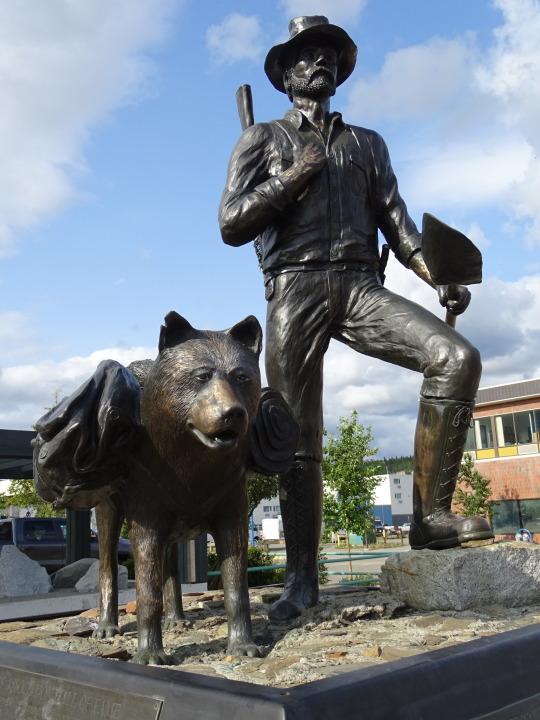

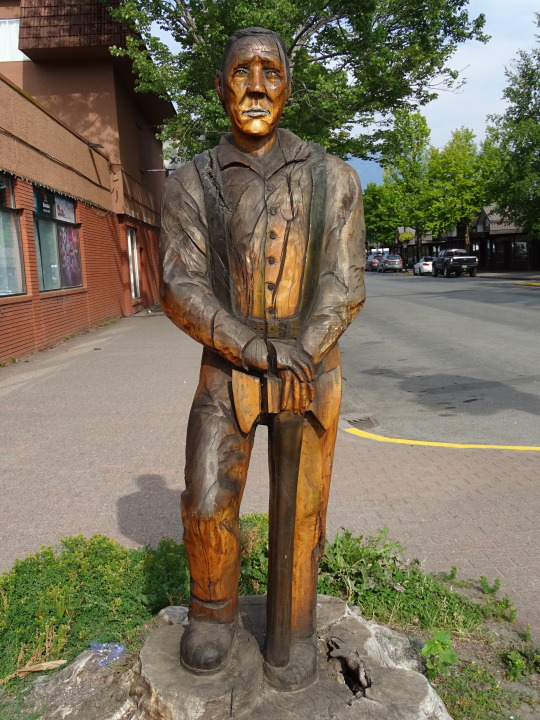
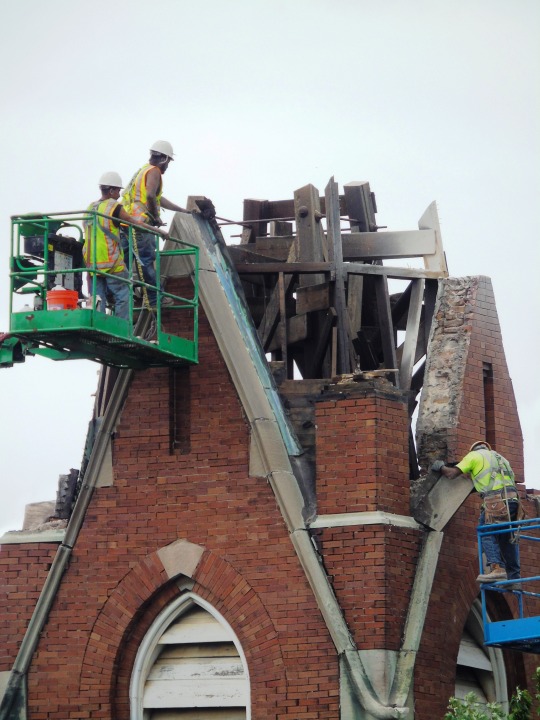
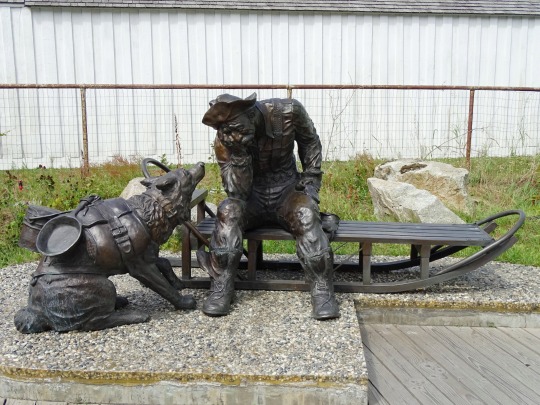
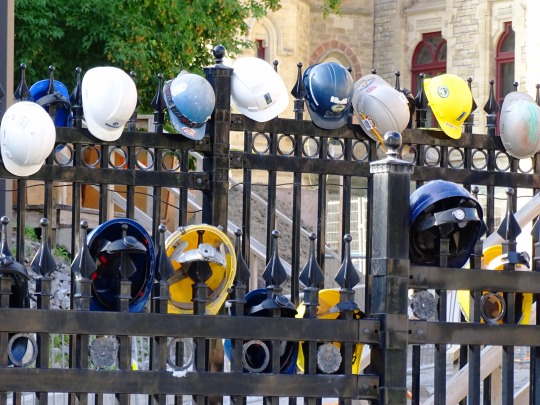
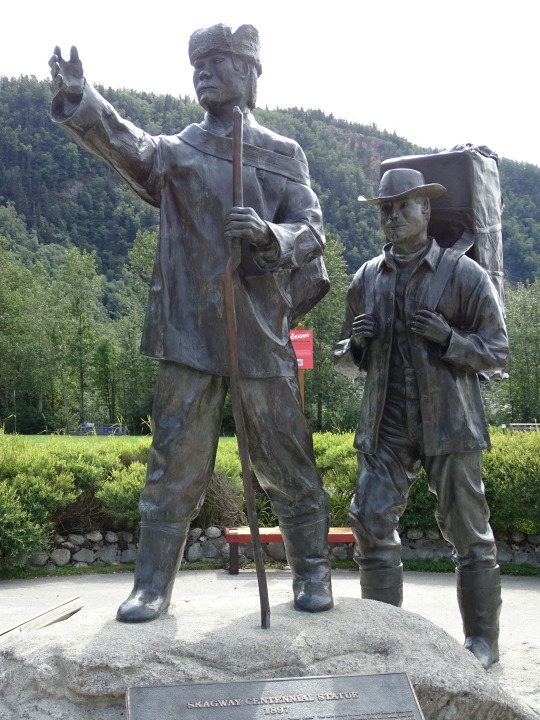



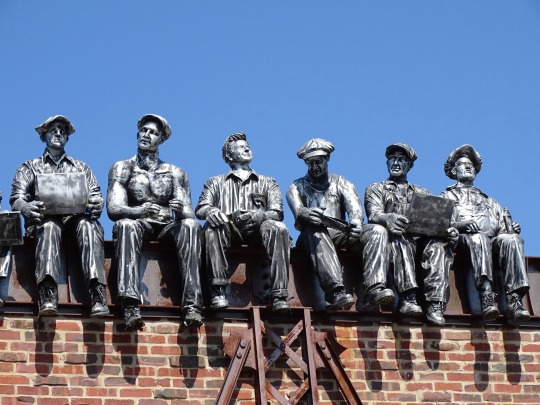

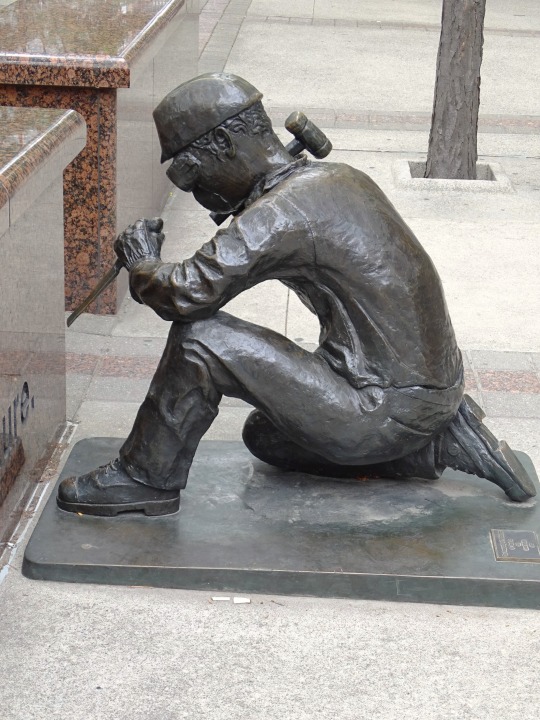
Labor Day
Summer’s final fling has arrived in the form of Labor Day. Yes, most of us get the day off, but this holiday triggers mixed emotions. While summer still has 21 calendar days left, it’s time to get serious. School’s starting and there’s a sense that summer vacation is over. So what’s behind Labor Day — and how did it earn a place as a federal holiday?
Let’s take a look.
When is Labor Day 2023?
Labor Day always falls on the first Monday in September, which means anywhere from September 1 through September 7. This year it's September 4 in the U.S. and Canada. However, this is not the case for most countries — the majority of which celebrate on May 1.
History of Labor Day
Do you get weekends off work? Lunch breaks? Paid vacation? An eight-hour workday? Social security? If you said “yes” to any of these questions, you can thank labor unions and the U.S. labor movement for it. Years of hard-fought battles (and the ensuing legislation they inspired) resulted in many of the most basic benefits we enjoy at our jobs today. On the first Monday in September, we take the day off to celebrate Labor Day and reflect on the American worker’s contributions to our country.
Labor Day History
There’s disagreement over how the holiday began. One version is set in September 1882 with the Knights of Labor, the largest and one of the most important American labor organizations at the time. The Knights in New York City held a public parade featuring various labor organizations on September 5 — with the aid of the fledgling Central Labor Union (CLU) of New York. Subsequently, CLU Secretary Matthew Maguire proposed that a national Labor Day holiday be held on the first Monday of each September to mark this successful public demonstration.
In another version, Labor Day in September was proposed by Peter J. McGuire, a vice president of the American Federation of Labor. In spring 1882, McGuire reportedly proposed a “general holiday for the laboring classes” to the CLU, which would begin with a street parade of organized labor solidarity and end with a picnic fundraiser for local unions. McGuire suggested the first Monday in September as an ideal date for Labor Day because the weather is great at that time of year, and it falls between July 4th and Thanksgiving. Oregon became the first U.S. state to make it an official public holiday. 29 other states had joined by the time the federal government declared it a federal holiday in 1894.
Maguire or McGuire? Read more on this unusual coincidence in our FAQs below.
What is the Haymarket affair?
On May 4, 1886 — at a time when most American laborers worked 18 or even 20 hours a day — tens of thousands of workers protested in cities all across the U.S. to demand an eight-hour workday. Police in Chicago attacked both those peaceful protests and a workers planning meeting two days later, randomly beating and shooting at the planning group and killing six. When outraged Chicagoans attended an initially peaceful protest the next evening in Haymarket Square, police advanced on the crowd again. Someone who was never identified detonated a bomb that killed a police officer, leading cops to open fire on protesters and provoke violence that led to the deaths of about a dozen workers and police.
The Pullman strike
Ironically, Chicago was also the setting for the bloody Pullman strike of 1894, which catalyzed the establishment of an official Labor Day holiday in the U.S. on the first Monday of September.
The strike happened in May in the company town of Pullman, Chicago, a factory location established by luxury railroad car manufacturer the Pullman Company. The inequality of the town was more than apparent. Company owner George Pullman lived in a mansion while most laborers stayed in barracks-style dormitories. When a nationwide depression struck in 1893, Pullman decided to cut costs the way a lot of executives at the time did — by lowering wages by almost 30% while he kept the rent on the dormitories he leased to his workers at pre-depression levels.
Railroad boycott
These conditions ultimately led workers to strike on May 11, 1894. The walkout gained the support of the nationwide American Railroad Union (ARU), which declared that ARU members would no longer work on trains that included Pullman cars. That national boycott would end up bringing the railroads west of Chicago to a standstill and led to 125,000 workers across 29 railroad companies quitting their jobs rather than breaking the boycott.
When the Chicago railroad companies hired strikebreakers as replacements, strikers also took various actions to stop the trains. The General Managers Association, which represented local railroad companies, countered by inducing U.S. Attorney General Richard Olney, a former railroad attorney, to intervene. Indianapolis federal courts granted Olney an injunction against the strike, a move that allowed President Grover Cleveland to send in federal troops to break it up.
A few days later, Cleveland realized that he had to act quickly to appease the country’s increasingly agitated labor movement. But he didn’t want to commemorate the Haymarket incident with a May holiday that would invoke radical worker sentiment. So Cleveland harkened back to the first established September 1882 holiday and signed into law that Labor Day in the U.S. would be celebrated on the first Monday in September.
Labor Day vs. May Day
Communist and socialist factions worldwide eventually chose May 1 as the date to mark the Haymarket affair. A 1904 conference issued a plea that trade unions stage rallies on the first day of May — demanding to make the eight-hour workday standard. They organized the action in the name of “universal peace.” The 1st of May is a national, public holiday in many countries across the world, generally known as “Labour Day,” “International Workers’ Day,” or a similar name – although some countries celebrate a Labor Day on other dates significant to them, such as Canada, which celebrates Labor Day, like the U.S., on the first Monday of September.
Here’s the U.S. Department of Labor’s official tribute to U.S. workers on Labor Day:
“The vital force of labor added materially to the highest standard of living and the greatest production the world has ever known, and has brought us closer to the realization of our traditional ideals of economic and political democracy. It is appropriate, therefore, that the nation pays tribute on Labor Day to the creator of so much of the nation’s strength, freedom, and leadership — the American worker.”
Related Labor Day Content
1) Top Labor Day quotes for your social feeds
Can you guess which president said, “My father taught me to work; he did not teach me to love it”? How about the famous American who uttered “All labor that uplifts humanity has dignity”? We have a list of Labor Day quotes to not only learn about the holiday but to also impress your friends at the barbecue.
2) Fire yourself from your own job
That’s correct. The makers of STōK cold-brew coffees have designed a contest — running through Labor Day — which will give three people $30,000 each in order to take a four-week “STōKbbattical” (from their dreary day jobs) and “make their dreams happen.” It can be anything from rock climbing in Patagonia to setting records for the number of tapas eaten in Spain. No matter what, STōK will help fund it. Unless of course, you’d prefer to spend the next four weeks filling out TPS reports.
3) 8 Labor Day Activities To Enjoy
Whether in the form of a leisurely barbeque, a relaxing swim in the pool, watching a film at a drive-in cinema, or even just relaxing at home with family, there are so many different ways to mark the occasion. We list some activities to try on Labor Day.
Labor Day timeline
1882 It’s Unofficial
10,000 labor workers march through Union Square in New York to protest poor working conditions and low wages.
1884 A Date is Set
The first Monday of September officially becomes Labor Day, with the Central Labor Union pushing other organizations to follow suit and celebrate.
1894 Congress Approves
Labor Day is approved as a national holiday by Congress, and President Grover Cleveland signs it into law.
2009 Let’s Not Forget Women in Labor
President Obama restores the rights of women to sue over pay discrimination with the Lilly Ledbetter Fair Pay Act.
Labor Day Traditions
Much like Memorial Day, which marks the traditional beginning of summer, Labor Day generally signifies that the season has ended — even though the calendar says otherwise. Holiday sales, barbecues, and travel tend to rule the day, while children finally adjust to the harsh reality of the “back-to-school” season. As far as U.S. sports are concerned, Labor Day weekend signals that baseball’s pennant races have entered their final stretch, and tennis fans get an extra day to watch the season’s last Grand Slam event — the U.S. Open in New York City. NFL regular-season games typically begin following Labor Day.
Labor Day by the numbers
162 million – the number of Americans (over 16) in the labor force.
40% – the percentage of U.S. workers who belonged to labor unions in the 1950s (that dropped to 11% by 2018).
1894 – the year Congress officially made Labor Day a federal holiday.
86% – the percentage of Americans planning Labor Day weekend travel who will do so by car.
41% – the percentage of Americans who plan to barbecue over Labor Day Weekend.
818 – the number of U.S. hot dogs eaten every second from Memorial Day to Labor Day.
$685 – the average kid’s back-to-school expenses.
$55,000 – the median U.S. household income.
705 million – the total number of U.S. unused vacation days (2017).
80% – the percentage of Americans who would take time off if their boss were more supportive.
— courtesy WalletHub ©2018
Labor Day FAQs
What does Labor Day really mean?
Americans, as well as workers around the world, celebrate Labor Day by reflecting on all the contributions everyday workers have made to society. Not all countries observe Labor Day on the same date though.
When is Labor Day 2020?
The U.S. observed Labor Day 2020 on Monday, September 2. It’s a federal holiday. Financial markets are closed. There is no mail delivery. Post offices and libraries are closed. Most retail businesses will remain open.
Who invented Labor Day?
It’s more confusing than you might think. The Labor Department explains it this way:
While most sources, including the U.S. Department of Labor, credit Peter McGuire with the origination of Labor Day, recent evidence suggests that the true father of Labor Day may, in fact, be another famous union leader of the 19th century, Matthew Maguire.
Maguire held some political beliefs that were considered fairly radical for the day and also for Samuel Gompers and his American Federation of Labor. Allegedly, Gompers, who co-founded the AFL along with his friend McGuire, did not want Labor Day to become associated with the sort of “radical” politics of Matthew Maguire. So in an 1897 interview, Gompers’ close friend Peter J. McGuire was assigned the credit for the origination of Labor Day.
What's the difference between Labor Day and May Day (May 1)
May 1 (or May Day) is a more radicalized version of Labor Day in many countries. The date recalls Chicago’s Haymarket affair in 1886. American workers, tired of 18-hour days, staged a protest. Police eventually fired on the workers — killing eight. The following night, May 4, another rally turned violent when someone threw a bomb at police officers. An estimated 11 people died and scores more were injured. Communist and socialist political parties eventually chose May 1 as the date to honor the dead and injured workers.
Labor Day Activities
Read up on the history of Labor Day
Buy an American-made product
Watch a movie about labor unions
Labor Day has a rich history that directly impacts the working conditions we experience today. So in between rounds of BBQ at your Labor Day celebration, take the time to discuss the U.S. labor movement and its contribution to our country's current work culture.
When you're doing your Labor Day shopping, take the time to read the labels. Consider buying products that say "Made in the USA" to show your support for American workers.
Many of us get Labor Day off. What better way to relax than to stretch out on the couch and watch a movie about the American labor movement? There are tons of union-themed movies to choose from. "Norma Rae" ring a bell? Side note: Unions play a major role in the entertainment industry.
5 Labor Day Facts Everyone Should Know!
It’s on May 1 in other countries
Stores remain open
Third most popular holiday for outdoor cookouts
Labor Day marks the unofficial NFL kickoff
Union members today
Most countries around the world celebrate Labor Day on May 1, and it is called International Workers’ Day.
While most schools and offices are closed on Labor Day, retail workers and shopkeepers don’t get the same break, as the holiday is huge for sales and shopping.
Labor Day is right behind the Fourth of July and Memorial Day in being the most popular holiday for barbecues and cookouts.
99.4% of the time, the NFL’s first official game of the season is on the Thursday following Labor Day.
In 2017, there were 14.8 million union members, according to the Bureau of Labor Statistics, while in 1983, there were 17.7 million.
Why We Love Labor Day
We're hard workers — we deserve the day off
It's one last chance to grill
It's the reason we can say TGIF
Statistics show that Americans work longer hours than citizens of most other countries — 137 more hours per year than Japan, 260 more per year than the U.K., and 499 more than France. And our productivity is high — 400% higher than it was in 1950, to be exact. So we totally deserve that day off.
Labor Day is widely considered to be the unofficial last day of summer. Before the air turns cold and the leaves start to fall, it's our last chance to grill some steaks and wear shorts.
Labor Day is a time to celebrate the benefits we enjoy at our jobs — including weekends off. The concept of American workers taking days off dates back to 1791, when a group of carpenters in Philadelphia went on strike to demand a shorter workweek (10-hour days, to be exact). It wasn't until 1836 that workers started demanding eight-hour workdays. So nine to five doesn't sound so bad after all.
Source
#Logger by Joerg Jung#Prospector and his dog by Chuck Buchanan#Stampeder Statue by Peter Lucchetti#Skagway Centennial Statue by Chuck Buchanan#Standing Together by John Greer#Anonymity of Prevention by Derek Lo and Lana Winkler#Terrace#Skagway#Ottawa#Chicago#New York City#Toronto#Whitehorse#USA#Canada#Labor Day#First Monday in September#4 September 2023#LaborDay
2 notes
·
View notes